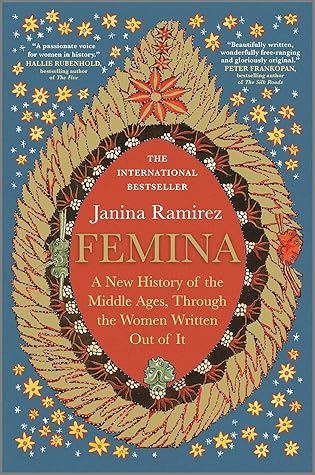More on this book
Community
Kindle Notes & Highlights
Read between
April 3 - April 12, 2024
The modern leaning towards science and reason over religion and spirituality has meant the deeply devout nature of the suffragette movement is often overlooked. For many today they are seen as political rather than pious. But the majority of women who took part in militant activity saw themselves as soldiers of Christ, promoting social change framed within religious terms.
Controlling access to the past controls populations in the present, and determining who writes history can affect thought and behaviour.
To be illiterate was not to be ignorant, but rather to utilise more of the memory actively. It was Christianity that brought literacy and Latin to a people who had depended for three centuries on oral tradition and memory. It could be argued that with writing came complacency, bureaucracy and rigidity.
The earlier burials with weapons, buckets of food, and fine clothing slowly gave way to simple Christian burials, with bodies wrapped in just a shroud. The idea of an afterlife where material wealth was needed, was replaced by systems of inheritance, whereby beautiful and prized possessions would be left to the next generation rather than buried in the ground to serve the dead.
eighth century, Mercia had a different approach to women in power than the neighbouring kingdoms of Wessex, Northumbria and East Anglia. In the huge region stretching from the Humber in the north, down the Welsh border to the Thames, women could sign charters, own land in their own right, and co-rule with their husbands. What’s more, through the increasing reach of monasteries founded by female members of the royal family, Mercian women could navigate their way into politically expedient positions as prominent decision makers.
A staggering 88 of these horses are depicted with large penises. There are four men with erections, too, and one flaccid penis is visible in the margin where an individual is being stripped of his chain mail.51 The largest penis belongs to the fine stallion William is presented with on the eve of battle. The most important man on the tapestry rides the horse with the biggest phallus. The second largest belongs to the horse ridden by King Harold; the implication being that he is a worthy opponent, second only to William himself. Size matters on the Bayeux Tapestry.
Had Emma never married Cnut, a Danish claim would not have led to the depletion of Harold’s forces at Stamford Bridge before the Battle of Hastings. Had Emma not sent her children to be raised in Normandy, then William would not have had such a strong claim to the English throne. Had Emma not shifted allegiance back and forth, the question of Edward’s successor would have been clearer, and there may have been other claimants to the throne.
Margarete Kühn’s involvement in saving the manuscript is little known. She quietly continued to contribute to medieval scholarship and outlived all her colleagues, dying 40 years after these events at the age of 92. Her obituary describes how she lived ‘an almost monastic existence’, something she clearly craved. She is an unsung hero of the dark post-war chapter of European history, from which numerous artworks and precious documents of the past may never emerge.
Synagoga is a counterpart to the female representation of the Christian church, Ecclesia, who is cloaked in gold, and also holds the faithful close to her. This sympathetic representation of Synagoga in Scivias demonstrates her opinion that Jews and Christians both contributed to the church, and they should not be persecution by Crusaders. A true medieval activist living through a time of fear, Hildegard was campaigning against immorality and corruption.


